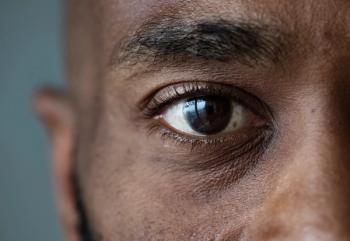
CAR T-Cell Combinations May Offer a Way to Overcome Antigen Escape in MCL
Joshua Brody, MD, discusses advances made with CAR T-cell therapy in MCL, the promise of venetoclax in B-cell malignancies, and the potential for bispecific antibody combination regimens in this disease.
The combination of CAR T-cell therapies with other novel approaches may possess the potential to improve efficacy and overcome resistance mechanisms in patients with mantle cell lymphoma (MCL), according to Joshua Brody, MD.
Antigen escape occurs when a drug or combination regimen aggressively targets CD19 with only a small number of CD19-negative cells present, explained Brody. The resistance mechanism has been well documented, not only in CAR T-cell therapies, but also with regard to bispecific antibodies and PD-L1 blockade in lymphomas and solid tumors, he added.
“Broadly, the problem with antigen escape is huge. With some of the combination therapies [that we explore], we have a notion of how to rationally combine them to try to prevent [this from happening],” said Brody. “That's [a focus of a research effort that] we're trying to publish right now. It's very interesting because [we’re examining] a slightly novel way to consider this problem… We don't want to treat the problem; we would much rather prevent the problem.”
When lymphoma cells lose multiple differentiation antigens such as CD19, CD20, and CD22 due to antigen escape, antigen-negative cells are not affected by combination therapy. However, by targeting the CD19-positive cells surrounding CD19-negative cells, a bystander effect can be leveraged to kill the remaining antigen-negative cells and prevent antigen escape, according to Brody.
In an interview with OncLive, Brody, an assistant professor of Medicine, Hematology, and Oncology at Mount Sinai, discussed advances made with CAR T-cell therapy in MCL, the promise of venetoclax (Venclexta) in B-cell malignancies, and the potential for bispecific antibody combination regimens in this disease.
OncLive: The emergence of CAR T-cell therapy has been a major advance in MCL, and KTE-X19 has been approved for patients with relapsed/refractory disease. How has this approval impacted the treatment paradigm?
Brody: CAR T-cell therapies are a giant advance in the field of MCL. We've always had some notion that MCL cells would be susceptible to immune attack because rituximab (Rituxan), even when used as a monotherapy, was moderately effective in MCL. In fact, rituximab maintenance therapy in MCL is 1 of the only places where it has demonstrated an overall survival (OS) benefit. That is an immune cell attack; we believe [that this] is mostly [done by mediating antitumor effects like] antibody-dependent cell-mediated cytotoxicity (ADCC) and [the use of] natural killer cells [to target] the rituximab-labeled lymphoma cells. The concept of that natural killer cell attack is not that different from a CAR T-cell attack.
We had seen the very early ZUMA data for MCL, which were promising. Now, we have the preliminary results of the whole trial in MCL, [and we are seeing] high complete remission (CR) rates [with this product], which seem to be durable. However, [this modality is not without] toxicity.
This therapy is probably not going to become a first-line therapy for our patients and some older or comorbid patients may not be great candidates for CAR T cells. [However, the therapy] has demonstrated great efficacy and very promising durability. It is a practice-changing [modality] and we have already put several patients with relapsed/refractory MCL on that commercial CAR T-cell therapy.
How would you best describe some of the adverse effects associated with this modality, and how are these managed in practice?
Conceptually, [management is] not different from other patients with lymphoma who are receiving CAR T cells, like those with diffuse large B-cell lymphoma (DLBCL). It may be a bit different from some of the younger patients who have acute myeloid lymphoma. [There, we see] a relative risk of cytokine release syndrome (CRS) and central nervous system toxicities. Conceptually, however, we manage patients similarly.
For example, we manage CRS with conservative therapy, close observation, fluid hydration, and pressors, etc. For patients with higher-grade CRS, [we use] steroids and the anti–interleukin [IL]-6 receptor antibody tocilizumab (Actemra); conceivably, other similar approaches can also be used. Other novel approaches have also emerged, [such as] anakinra (Kineret), which is an IL-1 receptor antagonist. Those approaches are all effective.
For neurotoxicity, we use many of those same strategies, but we haven't made [as much progress with managing this effect] as we have with CRS. Our best bet for both of these is to try to minimize the risk [before receiving treatment]. Our best correlate of both of those toxicities is tumor bulk. What can we do there? [We can] try not to use CAR T cell as an absolute last-ditch effort. [By] using this modality in third-line setting, rather than the fifth-line setting, perhaps we can debulk the patients with some other effective therapy [in the] MCL [arsenal]. That way, we’re not treating [patients with] very high tumor burden as they [begin] CAR T-cell [treatment].
Do you envision CAR T-cell therapy being combined with other novel agents?
Absolutely. The potential for combinations is not too dissimilar from ways that we consider combining bispecific antibodies; this will make a huge impact on the efficacy of CAR T-cell therapy. Specifically, 1 particular therapy resistance mechanism that we think about a lot in our lab is antigen escape, which is a type of immune evasion [that occurs] if you target CD19 very aggressively and have a small number of CD19-negative cells that grow out. This is well described in lymphomas and solid tumors—not just in CAR T cells, but also in bispecific antibody therapy and even in PD-L1 blockade. The antigen there is MHC class I or the subunit of that called beta-2 microglobulin. All we need to do if we're targeting with PD-L1
blockade or some tumor-associated antigen is lose MHC I expression [because] that is the antigen escape for all of those therapies.
Could you expand on some of the research you have participated in that examined the issue of antigen escape?
The way we think about antigen escape now is, if you lose CD19, some might say that [you can] just make a CD22 CAR T cell. Practically speaking, that is very difficult. We don't want to treat the problem; we would much rather prevent the problem. Also, sometimes, these lymphoma cells can actually lose multiple differentiation antigens in aggregate. We don't just lose CD19 by itself; sometimes we can lose CD19, CD20, and other B-cell markers concurrently. In fact, CD22 has been 1 of those [markers]. If the same cells that are losing CD19 will also lose CD22, then a doubly-specific CAR T cell targeting CD19 and CD22 would still miss the same antigen-negative cells. That has been the way we mostly think about the problem of antigen escape.
In the lab, we have been considering a very different way. If you can't target CD19, you can't target CD20, and you can't target CD22. In some of these other tumors, you can't target MHC class I. What is left to target in these antigen-negative cells that are about to escape? Something we thought about as a target is not any of the markers, but their geography. If you have 1 CD19-negative cell in the middle, a hundred CD19-positive cells are around it, so you could target that geographic feature. If you're able to increase bystander killing, you could solve and prevent that problem of antigen escape. In the lab, we have been studying how bystander killing can occur and how we can potentiate it. [We feel that this approach] is going to lead us to [identify] some potential rational combination therapies with CAR T cells, bispecific antibodies, and even checkpoint blockade.
Shifting over to another novel approach, how is venetoclax best being utilized in practice? What do you feel its future role is going to be in this disease?
Venetoclax, our FDA-approved BCL-2 inhibitor, was a big home run in chronic lymphocytic leukemia (CLL), by itself and in combination with CD20 antibodies. We have a lot of data [with this agent in] MCL, as well. It's probably 1 of the most promising agents for patients with BTK-refractory disease, and we even have some [information with] using it in those who are BTK inhibitor naïve.
[The agent has elicited] extremely high response rates, high CR rates, and similar safety to what we have seen in CLL, where there's some early risk of tumor lysis syndrome. [However], that risk is quite manageable with our standard dose titration that we use in CLL. Otherwise, we've seen some very durable remissions [with this agent].
It's hard for us to always predict which B cell or other tumor types that venetoclax will be [effective] in. However, MCL does have very high expression of BCL-2, so it's not so surprising that this agent would be effective [in this disease].
What have seen so far with bispecific antibodies and where do you see them going? Are any combination strategies on the horizon?
Bispecific antibodies are extremely promising in DLBCL, even in CAR T-refractory DLBCL, and this is certainly true in follicular lymphoma, where they have been looked at the most. We have seen very little data in MCL, but we could absolutely extrapolate the efficacy [we have seen in other diseases] and hopefully the safety profile, as well. MCL is more sensitive to CD20 therapy with rituximab than most non-Hodgkin lymphoma. We think that bispecifics will have to be highly effective [here].
What's exciting is that [despite] the late entrance into the bispecific field, [investigators] are already trying to look at how we can use these agents as combinations. We have upcoming trials looking at bispecific antibodies after standard frontline therapy [such as] rituximab, cyclophosphamide, doxorubicin, vincristine, and prednisone (R-CHOP); bendamustine (Bendeka) plus rituximab; and standard second-line therapies, such as rituximab plus lenalidomide (Revlimid). All those [approaches] would be relevant to look at in the MCL context, as well. They will be highly effective in MCL, and I'm saying that without any a priori data so far. We're excited to get those trials going.
[We should not] refer to some of these lymphomas like MCL and follicular lymphoma as incurable; [they have just been] incurable so far. If you can get someone into a pretty good CR with standard therapy, [such as] bendamustine/rituximab or any other, there's no reason you couldn't mop up the last remaining 1% of MCL cells with a bispecific antibody. These [diseases] are not incurable, and our intention is for them to be curable in the near future
Newsletter
Stay at the forefront of cutting-edge science with CGT—your direct line to expert insights, breakthrough data, and real-time coverage of the latest advancements in cell and gene therapy.











































